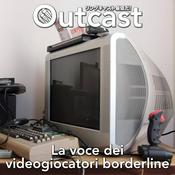918 episodi

856 | Mary Orvis Marbury, Fly Fishing Treasures, and Preserving Angling History with Steve Woit
17/12/2025 | 1 h 15 min
#856 Show Notes: https://wetflyswing.com/856 Presented By: FishHound Expeditions, Togiak River Lodge, Pescador on the Fly Sponsors: https://wetflyswing.com/sponsors Steve Woit has spent years hunting down the stories behind fly-fishing's most influential figures — including Mary Orvis Marbury, whose Victorian-era writing documented flies and tiers before the modern industry existed. In this episode, Steve walks us through the research discipline behind Fly Fishing Treasures, his deep dive into letters, catalogs, photographs, and tackle provenance that reveal how anglers built a culture long before we arrived. This conversation isn't about nostalgia — it's about protecting memory. Steve shows how writing, archiving, and conservation fundraising through donated tackle help safeguard fisheries and preserve the names and innovations that shaped our sport. #856 Show Notes: https://wetflyswing.com/856

Duane Hada on Growing Trophy Trout, Conservation, and Life as an Artist (CJ's Reel Southern Podcast #9)
16/12/2025 | 1 h 4 min
Show Notes: https://wetflyswing.com/855B Duane Hada joins Chad Johnson for a thoughtful conversation on what actually creates trophy trout fisheries—and why stocking alone isn't the answer. Duane breaks down the importance of catch-and-release regulations, managing pressure, and letting fish live long enough to reach their full potential. Drawing from rivers like the White River and the San Juan, he explains how conservation-first thinking shapes not only fish size, but the long-term health of entire fisheries. Beyond fishing, Duane opens up about his life as an artist and how creativity, patience, and observation carry over from the studio to the river. He talks about seeing fisheries as living "gardens," the influence of Dave Whitlock on both his conservation mindset and artistic outlook, and why mentorship—on the water and off—matters just as much as catching fish. This episode is about legacy, restraint, and approaching both art and angling with intention. Show Notes: https://wetflyswing.com/855B

855 | Trout Spey Tips for Dry Flies & Streamers with Howard Cole of JD High Country Outfitters
15/12/2025 | 52 min
#855 Show Notes: https://wetflyswing.com/855 Presented by: San Juan Rodworks, On DeMark Lodge, Four Wheel Campers Sponsors: https://wetflyswing.com/sponsors If you've ever stood knee-deep in a Western river wondering whether a trout spey rod might change your whole approach, this conversation with Howard Cole will get your wheels turning. Howard's spent a lifetime shaping flies, shaping cast loops, and shaping anglers at JD High Country Outfitters — and he brings a river-smart perspective on everything from trout spey dry flies to yellow sally emergers. Trout spey tips show up often in this episode, and they sneak into almost every story he tells from the Snake to the South Fork. By the end of this episode, you'll probably be digging through your fly box looking for your own emerger patterns — or maybe even picking up a short spey rod for the next drift. Show Notes: https://wetflyswing.com/855

854 | PGA Pro Phil Blackmar Applies Tour-Level Precision to Redfish Sight-Fishing
12/12/2025 | 1 h 1 min
854 Show Notes: https://wetflyswing.com/854 Presented by: Montana Fly Fishing Lodge, Intrepid Camp Gear, On DeMark Lodge, Yellowstone Teton Territory - Visit Idaho Today, we're sitting down with someone who has lived two deep lives, one on the PGA Tour and one on the flats of South Texas. Phil Blackmar spent years competing against the best golfers in the world, studying pressure, tempo, and how to stay calm when everything speeds up. Now he brings that same understanding to fly fishing, especially sight fishing for redfish and trout. Show Notes: https://wetflyswing.com/854

853 | Top Trout Flies with Steve Smith of Smitty's Fly Box
11/12/2025 | 51 min
853 Show Notes: https://wetflyswing.com/853b Sponsors: https://wetflyswing.com/smittys Steve Smith breaks down the fundamentals of top trout flies, fly tying materials, and the patterns that continue to produce everywhere. We also get into how Smitty's Fly Box evolved, how he approaches local hatches, and why mastering proportions might be the most important part of tying a durable fly. Show Notes: https://wetflyswing.com/853b
Altri podcast di Tempo libero
Podcast di tendenza in Tempo libero
Su Wet Fly Swing Fly Fishing Podcast
Ascolta Wet Fly Swing Fly Fishing Podcast, Terruzzi Racconta e molti altri podcast da tutto il mondo con l’applicazione di radio.it

Scarica l'app gratuita radio.it
- Salva le radio e i podcast favoriti
- Streaming via Wi-Fi o Bluetooth
- Supporta Carplay & Android Auto
- Molte altre funzioni dell'app
Scarica l'app gratuita radio.it
- Salva le radio e i podcast favoriti
- Streaming via Wi-Fi o Bluetooth
- Supporta Carplay & Android Auto
- Molte altre funzioni dell'app


Wet Fly Swing Fly Fishing Podcast
scarica l'app,
ascolta.





























